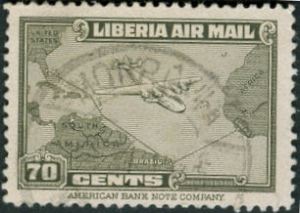
Suriname, Scott 359, 1968, Litho, 21mm x 36mm
The main design shows an antique map commemorating the founding of the first synagogue in the Western Hemisphere, in the settlement of Joden Savanne the Suriname River in the year 1685 of the common era. On the right hand side of the stamp, on the east side of the river, is the inscription “Ioods Dorp en Sinagoge” alongside a cluster of buildings which suggest that this is a rather small scale depiction. This region was hard to match up with an overall map of the country purely by eye, or even with the help of this historical reference:
In 1652, a new group of Jews arrived in Suriname, together with the Englishman Lord Willoughby, and settled on the Savannah, situated near the Cassipora creek.
My catalogue identifies the Hebrew inscription on the bottom as Joshua 24:2:
בְּעֵ֣בֶר הַנָּהָ֗ר יָשְׁב֤וּ
corresponding to a portion of this verse in English:
Joshua said to all the people, “This is what the LORD, the God of Israel, says: ‘Long ago your forefathers, including Terah the father of Abraham and Nahor, lived beyond the River and worshiped other gods.
in which the “River” is understood to be the Euphrates flowing through Mesopotamia (modern day Iraq), not of course the Suriname. The passage goes on to remind the Israelites about the original Covenant established by God and exhorts them to return to faithfulness.
There are Jews living in Suriname to this day, 350 years later, just a few degrees north of zero degrees latitude in South America. What must it have been like for their forebears to come to a country so different from the one they knew back then?














